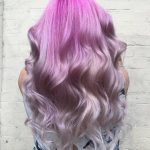If you’re experiencing hair loss, you might be wondering when it’s time to start wearing a wig for hair loss. While everyone experiences different symptoms and speeds of progression, there are some guidelines that can help you know when it’s time to start wearing a wig or choose another method of treatment, such as medications or surgery.
This guide will help you understand what kind of hair loss is best treated with wigs, how they work, and how to choose the right wig that works best for your specific needs and situation.

Getting started with wigs
Wigs can be an excellent option for people experiencing hair loss. They are available in a variety of styles and colors and can be custom-made to match your specific hair color and style. wiglets and toppers are also available for people who are not ready for a full wig.
If you are considering a wig, it is important to consult with a hair loss specialist to find the best option for you. In addition, wigs are available from online retailers.
When ordering online, keep in mind that shipping time may vary depending on where you live. If it’s custom-made, it may take several weeks for your order to arrive at your doorsteps.
Finding your perfect style
When it comes to wig shopping, the most important thing is to find a style that makes you feel comfortable and confident. If you’re not sure where to start, here are a few tips:
- First, take into account the type of hair loss you’re experiencing. If you have alopecia, for example, you’ll want to look for a wig that offers full coverage.
- Second, think about your lifestyle. If you’re an active person, you’ll want to choose a wig that won’t interfere with your activities.
- Third, consider your budget. Wigs can range in price from $30 to $3,000, so it’s important to find one that fits your needs and budget. Wig shops such as The Virgin Hair Fantasy share important information on how to get your insurance to pay for your wig if you need assistance.
Choosing the right color
Your wig doesn’t have to be an exact match to your natural hair color, but it should be close. If you’re not sure what color to choose, ask your stylist for help. You might also want to consider getting a wig that’s a few shades lighter or darker than your natural hair color. This can help give you a more natural look.
Related Posts
Essential accessories
If you’re considering a wig, there are a few essential accessories you’ll need to get started. First, you’ll need a wig cap. A wig cap helps keep your natural hair in place and provides a base for the wig to sit on.
Depending on the type of wig you get, you’ll need some wig tape. Wig tape is used to secure the wig to your head and keep it from slipping. Other wigs require that you’ll need some wig glue. Wig glue is used to secure the wig to your head if you have bald spots or thinning hair.
Fourth, you’ll need some hair pins. Hair pins are used to secure the wig to your head and keep it from slipping. Fifth, you’ll need a comb. A comb helps keep the wig in place and keeps it from tangling.
Lastly, if your wig has a lace front, you will also need some wig makeup to get the lace to match your hair.
You’ve probably seen wigs in magazines, movies, and even on TV. They come in all colors, styles, and lengths. And while they’re often associated with cancer patients or chemotherapy, more and more women are turning to wigs as a way to cope with hair loss.
But how do you know if you’re ready to take the plunge? The best time to start wearing a wig is when you begin experiencing thinning or bald patches that can’t be fixed by cutting your own hair. Now that you have all of the information, go ahead and start having fun trying different wigs with different hairstyles!






